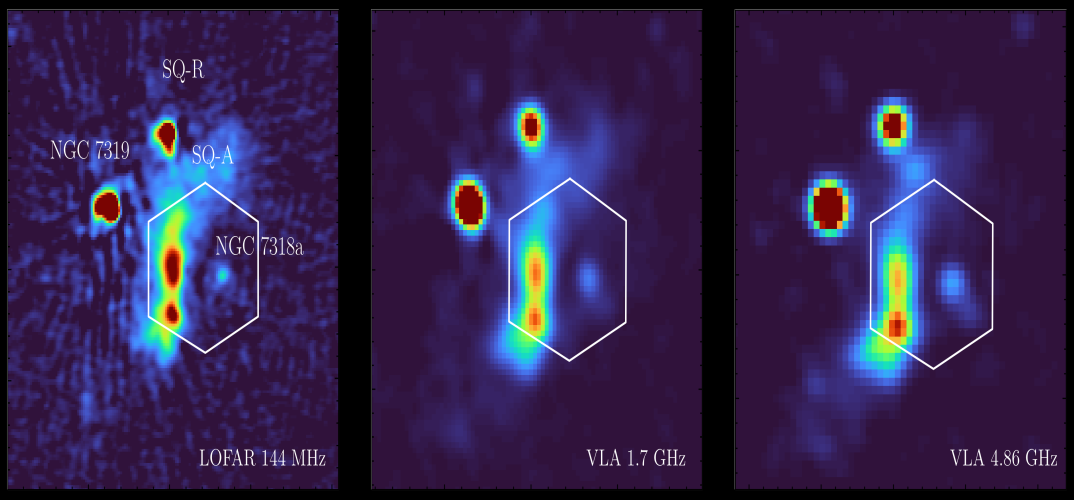Massive collision between galaxies travelling at 2,000,000 miles per hour observed in detail by next generation science facility

A team of scientists led by the University of Hertfordshire has captured a large-scale "shock front", using the new 20-million Euro William Herschel Telescope Enhanced Area Velocity Explorer (WEAVE) wide-field spectrograph in La Palma, Spain. This is the first observation using the new WEAVE facility.
This shock front is among the most striking phenomena in the Universe, being formed in the aftermath of violent collisions between galaxies.
More than 60 leading astronomers, led by Dr Marina Arnaudova at the University of Hertfordshire, have investigated this dramatic feature in Stephan’s Quintet, a nearby galaxy group that consists of five galaxies first sighted almost 150 years ago.
Dr Marina Arnaudova said:
“Since its discovery in 1877, Stephan’s Quintet has captivated astronomers, because it represents a galactic crossroad where past collisions between galaxies have left behind a complex field of debris. Dynamical activity in this galaxy group has now been reawakened by a galaxy smashing through it at an incredible speed of over 2 million miles per hour (3.2 million kilometres per hour), leading to an immensely powerful shock, much like a sonic boom from a jet fighter.”
The international team has uncovered a dual nature behind the shock front, previously unknown to astronomers. The new insight and unprecedented detail came from WEAVE’s Large Integral Field Unit (LIFU), which was combined with other cutting-edge instruments such as the Low Frequency Array (LOFAR), the Very Large Array (VLA), and the James Webb Space Telescope (JWST).
Dr Arnaudova explained:
“As the shock moves through pockets of cold gas, it travels at hypersonic speeds—several times the speed of sound—powerful enough to rip apart electrons from atoms, leaving behind a glowing trail of charged gas, as seen with WEAVE.”
Soumyadeep Das, a PhD Student at the Centre for Astrophysics Research (CAR) at Herts, added:
“However, when the shock passes through the surrounding hot gas, it becomes much weaker. Instead of causing significant disruption, the weak shock compresses the hot gas, resulting in radio waves that are picked up by radio telescopes like LOFAR.”
This system presents an ideal laboratory to understand the chaotic and often violent relationship between galaxies, which is why it was the focus of the first-light observation by the WEAVE Large Integral Field Unit (LIFU).
The team’s research is published in the Monthly Notices of the Royal Astronomical Society (MNRAS), and they believe that WEAVE is set to revolutionise our understanding of the Universe.
Professor Daniel Smith, an astrophysicist at CAR, Herts, commented:
“It's really neat work that Marina has put together with this large team, but this first WEAVE science paper also represents just a taste of what is to come over the next five years now that WEAVE is becoming fully operational.”
The University of Hertfordshire has made several recent breakthroughs in astrophysics. In September, it led survey work to establish the first ever infrared map of our Galaxy. Shortly before that, it co-led work to identify the largest black hole jets ever found, identifying 10,000 more in the process.
The University is a leading research institution worldwide in astrophysics, with over 50 research astrophysicists and 30 postgraduate research students. It has its own dedicated Observatory in Bayfordbury, one of the best-equipped in the UK, used for teaching, research and outreach work.